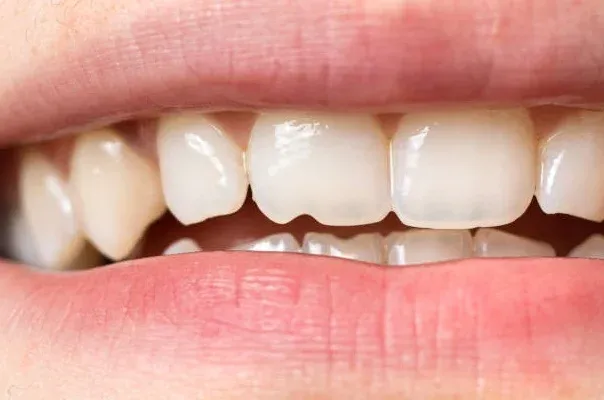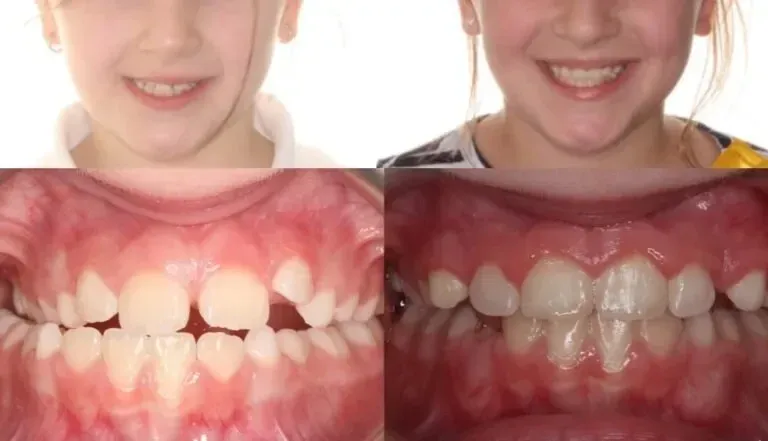I Accidentally Rinsed or Spit After My Tooth Extraction: What to Do Now (and How to Avoid Dry Socket)
I Accidentally Rinsed or Spit After My Tooth Extraction: What to Do Now (and How to…
I Accidentally Rinsed or Spit After My Tooth Extraction: What to Do Now (and How to Avoid Dry Socket)
Take a deep breath. You’ve just had a tooth extraction, and your dentist probably gave you a strict list of warnings: “Don’t spit, don’t rinse, don’t use a straw.” And then, in a moment of autopilot, you accidentally rinsed or spit.
Now you’re here, heart pounding, thinking, “Did I just ruin everything? Am I going to get a dry socket?”
You are not alone. This simple mistake happens far more often than you think. This article is your guide to answering that sinking feeling: what happens if you accidentally spit or rinse your mouth? We will explain exactly what to do now, what to watch for, and how to ensure a smooth recovery after your tooth extraction.
1. What Happens If You Accidentally Rinse or Spit After a Tooth Extraction?
The immediate, honest answer is: rinsing or spitting once by accident might not cause any harm, especially if you were gentle. However, the risk is very real.
The primary danger of spitting or rinsing is the suction or negative pressure you create in your mouth. This force, even if minor, can dislodge the blood clot forming in the empty socket. This blood clot isn’t just a scab; it’s the biological foundation for your healing process. Think of it as a natural “cork” that protects the exposed bone and nerves underneath.
If you did find yourself accidentally spitting, the most important thing is to stop immediately and not do it again. Do not “check” the extraction site with your tongue or fingers. We’ll cover what to do next, but for now, know that the main risk is displacing this critical protective clot.
2. Why Is Rinsing Your Mouth After Tooth Extraction So Risky?
To understand why your dentist was so insistent on avoid rinsing, you need to understand what happens in your mouth after a tooth extraction. As soon as the tooth is removed, the empty socket fills with blood. This is perfectly normal and is the crucial first step of healing.
This blood coagulates to form a protective barrier. This blood clot is essential for two reasons:
- Protection: It shields the sensitive bone and nerves in the empty
socketfrom bacteria, food particles, and air. - Healing: It acts as a scaffold for new tissue and, eventually, new bone to grow into the space where the
toothused to be.
When you rinse your mouth, especially within the first 24 hours, the force of the water (even just plain water) can dislodge this fragile, newly-formed clot. The same applies to spitting after tooth extraction, which creates a powerful suction force. If the clot is dislodged, you leave the surgical site exposed to painful complications.
3. The “Dry Socket” Dilemma: What Is It and Can Rinsing Cause It?
This is the number one fear: dry socket. The medical name for this condition is alveolar osteitis. It is not an infection, but rather a failure of healing.
A dry socket occurs when the blood clot at the extraction site either fails to form properly, is dislodged prematurely, or dissolves too soon. Without that clot, the socket is left with exposed bone. When this bone and the surrounding nerves are exposed to air, fluids, and food, it causes severe pain, often described as worse than the original tooth ache.
And yes, vigorous rinsing or rinsing too soon can absolutely cause dry socket. It’s one of the leading (and most preventable) patient-controlled causes of dislodging of the blood clot. This is why the aftercare instructions from your dentist are so strict about being gentle with your mouth after the extraction.
4. What Are the Signs of a Dislodged Blood Clot or Dry Socket?
If you accidentally rinsed my mouth, it’s normal to be on high alert. Here is what you need to monitor over the next few days.
First, don’t panic. The signs of dry socket will not appear immediately. They typically begin 2 to 4 days after the oral surgery. The first sign isn’t always visual.
The tell-tale sign of a dry socket is severe pain. This isn’t the mild-to-moderate soreness that is managed by the painkillers your dentist prescribed. It is a deep, throbbing, radiating pain, often shooting up towards your ear or eye on the same side of your mouth. You may also notice persistent bad breath or a foul taste coming from the extraction site, and the socket itself may look empty, with a dull, whitish exposed bone visible instead of a dark, healing clot.
5. I Accidentally Rinsed! What Should I Do Right Now?
So, the mistake happened. Here is your immediate action plan:
- Stop Immediately: Do not
rinseagain. Do notspit. Do not probe the area. - Don’t Panic: As mentioned, a single, gentle rinse may not
dislodge the clot. Worrying won’t help. - Replace Gauze (If Bleeding): If the
extractionsite is still bleeding, or if this happened within the first few hours, place a fresh piece of sterilegauzeover thesocketand bite down with firm (but gentle) pressure for 30-60 minutes. This helps encourage theclot to stabilize. - Just Monitor: For the next 24-72 hours, be vigilant for the signs listed above (severe, worsening pain; bad smell/taste). Mild pain is normal. Pain that gets worse instead of better is the warning sign.
- Call Your Dentist: If you experience any
signs of dry socket,contact your dentist immediately. Do not try to treat adry socketyourself. They will clean thesocketand place a medicated dressing to soothe theexposed bone and nervesand restart thehealing process.
6. When Can You Safely Rinse Your Mouth After a Tooth Extraction?
This is the most common follow-up question. The general rule is to wait at least 24 hours after your tooth extraction before you start any kind of rinsing.
During the first 24 hours, the blood clot is extremely fragile and still forming. Any pressure can wash it away. After 24 hours, the clot has typically stabilized enough to withstand gentle rinsing. In fact, after 24 hours, rinsing becomes an important part of your oral hygiene to help keep your mouth clean and reduce the risk of complications like infection.
Many dentists recommend waiting a full 24 hours before beginning a salt water rinse regimen. Always follow your dentist’s aftercare guidelines to the letter, as the timeline may vary based on the complexity of your extraction (like wisdom teeth removal).
7. How Should I Rinse My Mouth to Avoid Complications?
When it is time to start (usually after 24 hours), how you rinse is just as important as when. Do not swish vigorously as you would with mouthwash.
The best method is the salt water rinse. Mix half a teaspoon of salt into a cup of warm (not hot) water. Take a small sip and simply tilt your head from side to side, allowing the saltwater to flow gently over the extraction site. Do not “swish” or “gargle.”
When you’re done, do not spit! Instead, lean over the sink, open your mouth, and simply let the water fall out. It may feel strange, but this avoids any suction that could pull the clot. Repeat this 3-4 times a day, especially after meals, to aid healing and reduce bacteria.
8. What Else Can Cause a Dry Socket Besides Rinsing or Spitting?
While rinsing too soon and accidentally spitting are common culprits, they aren’t the only ones. To ensure proper healing, you must also avoid:
Drinking Through a Straw: This is the #1 cause ofdry socket. Thesuctionmotion youcreatewhen using astrawis incredibly strong and can easilydislodge the blood clot.- Smoking: Smoking is disastrous for
healing time. The physical act of inhaling createssuction, and the chemicals in smoke contaminate thesocketand reduce thebloodflow necessary for healing. - Hard or Crunchy Foods: Stick to soft foods for the first few days. Sharp pieces of food can poke the
extraction siteanddislodgetheclot. - Vigorous Coughing or Sneezing: If you must cough or sneeze, try to do so with your
mouthopen to minimize the pressure build-up.
9. How to Care For Your Extraction Site in the First 24 Hours?
Since the first 24 hours are the most critical to allow the blood clot to form, here is what you’ve recently had a tooth extracted should focus on.
The aftercare is simple: rest. Keep your head elevated to minimize bleeding. Use ice packs on your cheek (15 minutes on, 15 minutes off) to reduce swelling. Take your pain medication as prescribed by the instructions provided by your dentist and only eat soft, cool foods.
As for hygiene, you can gently brush your other teeth and gums, but avoid the side of your mouth with the extraction entirely. Remember, on this first day, “calm” is the key to the recovery process.
10. What About Oral Hygiene and Whitening Post-Extraction?
It’s natural to want to maintain your oral health, especially when you have a healing wound. After 24 hours after the procedure, as we discussed, the gentle salt water rinse is your best friend. But what about your normal routine, like teeth whitening?
Here, you must be very patient. The extraction area is an open wound. Using any whitening chemicals near it could cause complications such as infection and significant pain. You must wait until the socket is fully healed (this can take several weeks) before considering any whitening treatments.
Once your dentist gives you the all-clear that healing is complete, you can think about restoring your smile’s sparkle. After the stress of post wisdom teeth recovery or any tooth extraction, brightening your smile might be just what you need. A product like 5D Whitening Teeth Strips can be a great at-home option after full healing, as it works gently and effectively on the surrounding teeth and gums to ensure your healthy, healed smile is also a brilliant one.
Key Takeaways: What to Remember
If you’re worried because you accidentally rinsed or spit during your tooth removal recovery, remember these points:
- Don’t Panic: A single, gentle mistake rarely causes immediate damage.
- The Enemy is
Dry Socket: The risk is dislodging the protectiveblood clot, which leads to a painful condition calleddry socketfromexposed bone and nerves. - Wait 24 Hours: Do not
rinse,spit, or use astrawfor at least 24 full hours after yourextractiontoallow the blood clotto stabilize. - Rinse Gently with
Salt Water: After 24 hours, use asalt waterrinse by tilting your head, not swishing. Let thewaterfall from yourmouth(do notspit). - Know the Signs:
Severe painthat increases (not decreases) 2-4 days after theextractionis the primary sign ofdry socket. - When in Doubt, Call Your
Dentist: Do not hesitate tocontact your dentist immediatelyif you suspect a problem. Tofollow your dentist’sadvice is the best way to ensureproper healing.







